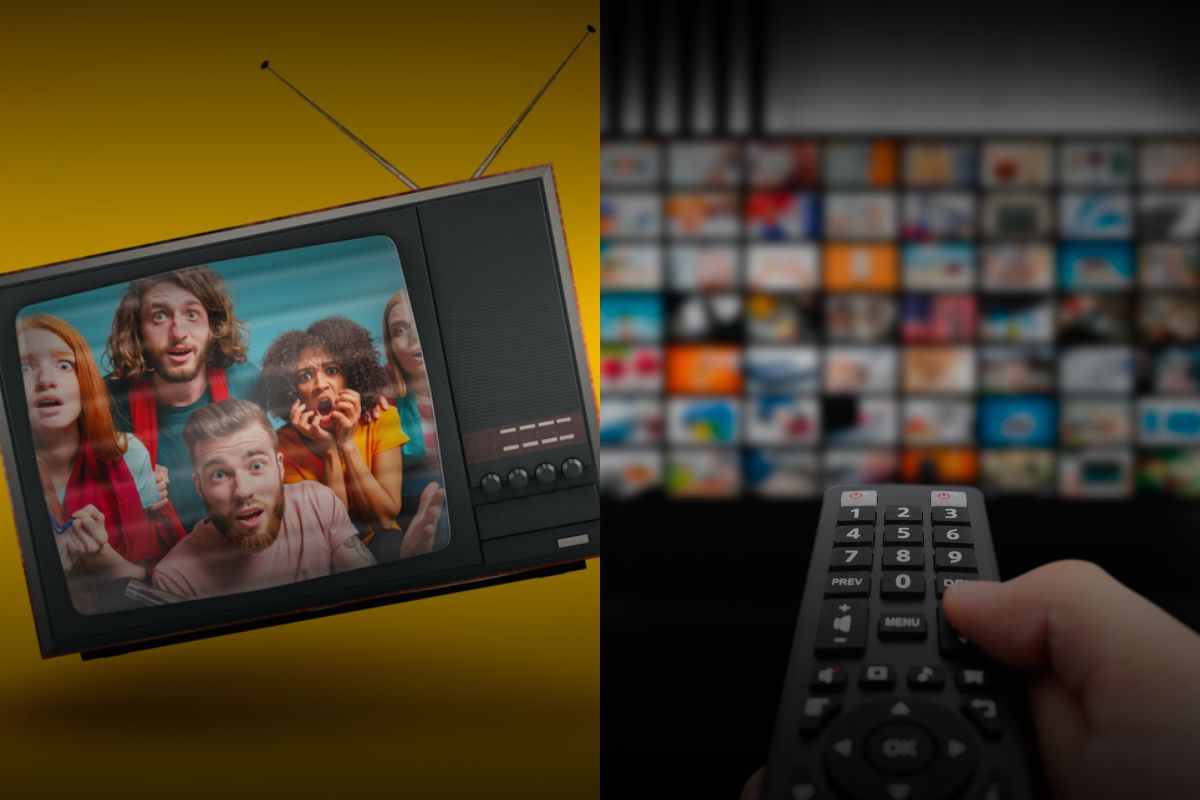Commercial vs Advertisement has its fair share of choices and preferences.
TV commercials mostly focus on spreading or introducing a certain agenda to the public. On the other hand, video advertisement is focused on a specific group having an interest in that topic.
| TV Commercial market stands at 384 billion U.S. dollars, whereas the video advertisement market stands at 232.7 billion U.S. dollars in the current market. |
Depending upon the preference and choice of marketing, both types of video content can be well adapted and suitable to approach. But before that, make sure you know why and which one should be your go-to choice. Let’s explore that.
TV Commercials vs. Video Advertising
| Subject | TV Commercials | Video Advertising |
| Audience Reach and Targeting | – Broad reach to a mass audience. – Limited targeting options based on demographic data. | – Advanced targeting using data analytics. – Ability to reach specific audience segments on various platforms. |
| Cost and Budgeting | – High production costs. – Expensive airtime and placement fees. | – Variable costs depending on platform and production quality. – More budget-friendly options are available. |
| Engagement and Interaction | – Passive engagement. – Limited viewer interaction. | – Interactive elements (clickable links, call-to-action buttons). – Higher engagement through personalized content. |
| Measurement and Analytics | – Traditional metrics like reach and frequency. – Challenges in tracking direct impact on sales | – Traditional metrics like reach and frequency. – Challenges in tracking direct impact on sales. |
| Flexibility and Adaptability | – Fixed airtime slots and formats. – Less flexibility in content changes. | – Dynamic and adaptable to different platforms. – Easy to update and modify content. |
Historical Context
Everything comes with a purpose and aim. TV commercials and video advertisements had the same focus in coming to a popular adoption.
TV Commercials
Commercials during the 1900s were mainly aired on the radio at first. With the invention of TV, brands decided to portray the same visually. In 1941, the first ever commercial was aired for “Bulova” watch before a baseball game. Businesses would broadcast generic messages to large audiences in the simplest way possible. A handful of companies adapted TV commercials to let people know about their businesses besides newspaper, poster, and radio commercials.
Fast forward to the day, the technology developed massively. In these 80 years, businesses delivered their message most dynamically, reaching the highest number of audiences through TV commercials. Limitation, no restriction no, only quality content speaks for the brand now.
Video Advertising
With the prevailing of commercials, in 2005 YouTube brought the innovation of experiencing video online. The platform enabled people to watch videos from any point and as many times as they wanted. Later on, Facebook enabled the same feature, and slowly the other social media platforms came into the same features.
The first iPhone 2007 brought the feature of watching video on a phone. With this, the other phone companies implied the feature and enabled people to watch online videos. Through this innovation, video advertisements came into being as everyone worldwide could watch videos from their phone. Branded into the occasion and started video advertising on the platforms.
Audience Reach and Targeting
The audience perception and acceptance won’t be the same as TV commercials and video advertising. Depending on the platform and audience’s need, TV commercials and video advertisements work in their way to promote a brand.
TV Commercials
For a broad and wide range of audiences, TV commercials work perfectly to put the main agenda in front of the people. Be it any brand or business, it gets well reaches a major portion of people if not all.
Also, TV commercials have no limitations on broadcasting or portraying. Such content can be broadcasted anytime considering mass engagement and perfect promotion.
Video Advertising
Now, video advertising is not that of a wide perspective in reaching people. The scope of the promotion and adaptation of video advertising is limited to targeted specific audiences.
Such target varies on demography, culture, trends, social adaption, and whatnot not. With those features up there, you can tan ake aggressive promotion or a customized one for your brand for those specific audiences.
Cost and Budgeting
You don’t need to have all the specific elements and characters of a TV commercial in a video advertisement. Thus, the cost of acquiring such has a good difference in number. Let’s see detailed information about their cost and budgeting.
TV Commercials
TV commercials are mainly focused on a wider range of audiences. So, the model and the characters in the commercial have to be an all favorite one. Otherwise, it won’t get the expected acceptance and validation there. So, the cost of such an influential character is by default higher.
Moreover, a commercial is shot at exclusive locations and premium sets. There are more costs to add up to your budget. The production work of the commercial also has to be convincing and top-notch. So, a big production house is required for that as well. Add up all the costs, and it stands good in the end for a budget consideration.
| The average cost of a 30-second TV commercial in 2019 was $104,735. (Source: Statista) |
Video Advertisements
For video advertisements, a big budget for production is not that mandatory. As dedicated to the specific audience, you can try a content-based focus for promoting your brand to them.
So, you don’t have to go fancy creation there. Targeting the specific audience, make a video with suitable elements needed; that saves a good budget.
Moreover, video ads are distributed on YouTube, Facebook, Instagram, etc. social media platforms. You can run the ad for a specific time even for your audiences there. Paid promotion and upliftment the of brand are performed mainly by video ads. So, you can have good control over starting and stopping the campaigns as per your budget.
Engagement and Interaction
People consume what they want. Their engagement and interest in topics also depend on how they’re presented with such. The same goes for TV commercials and video advertisements.
TV Commercials
The TV commercial is dedicated to a wider range of audiences. The main motive for making the TV commercial is to introduce the brand to everyone out there. Now, it might be favorable to someone and opposite to the others. Moreover, for its repetitive and much number of broadcasting, people sometimes get bored or pissed off by the content. As a whole, there isn’t any forceful or dedicated engagement from the people.
Video Advertisement
Video ads here have a great advantage. You can create various polls and call-to-action agendas for your audience to grab your brand. These pave the path to raising the interaction of your brand among people of your brand’s KPI. Your content remains in the head and can become viral if it stands up to the point. Potential customers are created this way, increasing the volume of the audience of your content.
Measurement and Analytics
The success and reach of advertisements and commercials can be well determined. But, they don’t fall in the same parameter, you have to check the dedicated benchmark there. See how you can measure the current status and final output of these video contents.
TV Commercials
TV commercials are more repetitive and broadcast than any other video content. Since it is broadcast independently at every time, there are hardly any ways to track the succession of the ad. Moreover, the acceptance also can’t be measured or stated by any parameters. Ultimately, the goal is to acknowledge the brand or product to the people through it, everywhere in their lives.
Video Advertisement
TV commercials are very tough to measure, but video advertisements aren’t. You can measure every single detail like reach, audience engagements, reactions, duration of the video played, clicks of the internal links or polls, etc. Based on such parameters, you can take necessary actions and other steps in the further approaches to modify the promotion.
You can also determine the success of the promotion through these parameters. High engagement means your video was liked by the audience. It got well accepted, pretty much perfect for attaining your brand.
Flexibility and Adaptability
The purpose of TV commercials and video advertisements won’t work for the same. Their techniques and flexibility differ in the making and production of their respective video content.
TV Commercials
TV commercials are allotted with specific air time for their video broadcasting. They come in serial after one commercial, in a sequential manner. So, audiences can’t watch the commercial anytime they want. The audience can’t drag back to any portion they missed in the video by themselves. Ol; Not even the creators can edit the commercial whenever they want. Once the commercial airs, it gets bounded. No edits cuts or modifications can be made for the scheduled broadcasting.
As TV commercials are more about campaigning or awareness creation, they don’t stay in the slot of being audience consent. It’s just, that the message or brand introduction just needs to happen, that’s it.
Video Advertisement
You can put Video Advertisements on different platforms you want, especially on social media. Viewers can engage in the video, make comments, and enact however they want. Even virality and quick spread tendency have their share in video advertisements.
Marketers can even update the video or the message through the video whenever they want. Such liberty allows the brands to act as per what the audiences want. Audience satisfaction and acceptance go up.
Case Studies
Let’s see a case study of some of the most amazing TV commercials and impactful video advertisements. A glance at their purpose and success will be our main focus.
TV Commercials
Talking about the best TV commercials, Apple’s “1984” commercial introducing the Macintosh (currently known as ‘Mac’) is one of the most influential ones. There was hardly any scope for going for video advertisements then, so such commercials had a huge weight on their side. The brand launched its innovation and aired it once then, whose impact is still prevailing now with over 100 million people using Macs currently in the world.
Another amazing commercial was Coca-Cola’s “Hilltop” featuring people of different countries, regions, religions, cultures, and whatnot. All of them promote the brand, assuring that Coca-Cola is for the whole world. Now, more than 200 countries have direct access to Coca-Cola summing to 1.9 billion servings every day.
Video Advertisements
Apple again, came out with its agenda of “seeing things differently” in their video Apple-Perspective. Showing different angular perspectives, the brand highlighted its technology and innovation in different perceptions for people. They portrayed that Apple can come into account according to what people want. 4.4 million people viewed the video, released in September 2014.
Spotify’s “Your Music, Your World” also created an amazing campaign for their app, denoting their features to connect to people and be an integral part of their daily lives. The music and entertainment part of people needs nothing but Spotify across all the countries in the globe. Connecting people from different parts of the world through music was their standout point.
Best Practices for Marketers
Marketers need to understand what they’re going for. Are they looking for a campaign or promoting a specific product of a brand? Their aim and goal work a lot here in choosing the best possible adaption.
TV Commercials
For a campaign and awareness, the TV commercial will always stand up to the case. Coming before the audience again and again at certain intervals of time, the commercial never misses out on an opportunity to deliver what it wants.
Yes, sometimes it becomes repetitive, but that’s the goal of choosing the commercial. Viewers will consume it, will keep it in their heads, and will relate to any such things that come beforehand. Success prevails in that manner.
Video Advertisements
On the other hand, video advertisement prevails to a specific section of people on different platforms. Marketers can reach out to their desired audiences as per their will, can put elements that the specific audiences want, and can monitor their responses.
Making a video go viral through these elements is one of the best features of video advertisements. This brings more potential viewers, acknowledging the brand or product. Even editing or restructuring the content is possible through this practice, which gives vast freedom to the marketer.
Get The Best TV Commercials and Video Advertisement Content
LocalEyes has stood out in producing some of the best video content. Be it testimonials commercials or video advertisements, we are here to cover up all your favorite content creations. Check out our portfolio decorated with the best of our creations with various clients across the country. Further, our YouTube has several categories of videos that you might’ve been searching for by now.
Which One Is For You?
In a battle between commercials vs. advertisements’re the one to choose the weapon. As a marketer, you’re forcing your agenda on the people in commercials. They come one after the other, as long as the viewer is confined to their palace.
For the video advertisement, you’re bringing potential viewers through your specific and existing audience. You can monitor and edit the video as per the key factors and performance benchmarking, but this is missed in TV commercials. Choose the one you want, LocalEyes is always there to serve the dish.
Frequently Asked Questions
Depends, if your focus is to spread any message or introduce a product to the public, then TV advertising is a better and preferred option. Otherwise, for a specific target market and promotion, online advertising is more suitable.
A TV commercial is a type of advertisement, that focuses on promoting a product or service by broadcasting relevant content on television, on certain time slots. This scheduled broadcasting enables the public to acknowledge the promotion anytime soon, in those specific time intervals. So, it indeed is an advertisement.
YouTube ads have more targeting options than TV ads, so they’re more effective. For your brand or product promotion, you can choose a specific audience with similar interest in the product and demographic preferences of the product. This paves you the feasibility of reaching the person who needs you, which is unlikely to happen in TV ads.
Social media ads are more targeted towards the right audience, whereas TV ads are broadcast publicly without any target. High-level engagement and feedback exchange feasibility is enabled in social media ads, whereas communication is only one way for TV ads.

Founder at LocalEyes Video Production | Inc. 5000 CEO | Emmy Award Winning Producer





